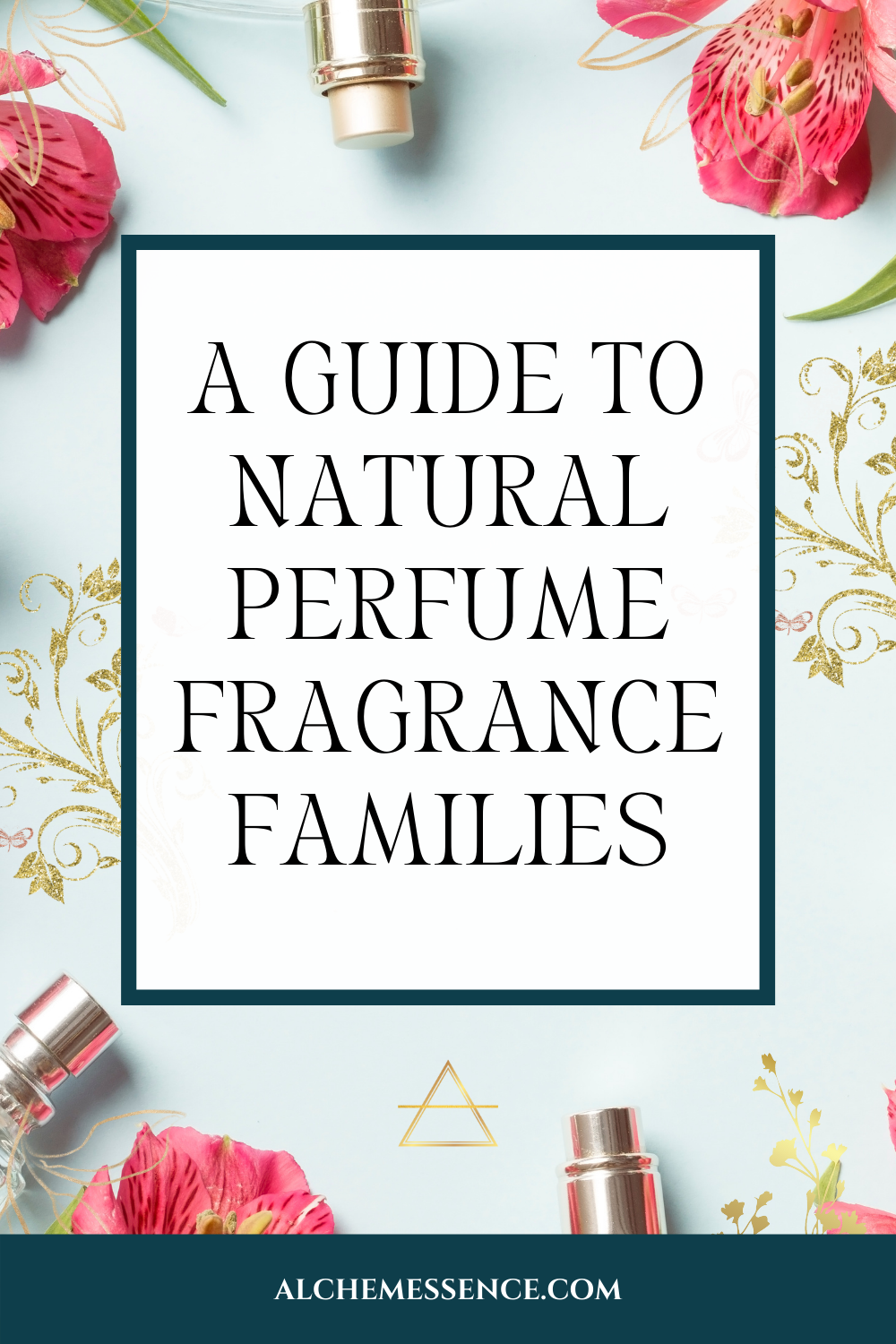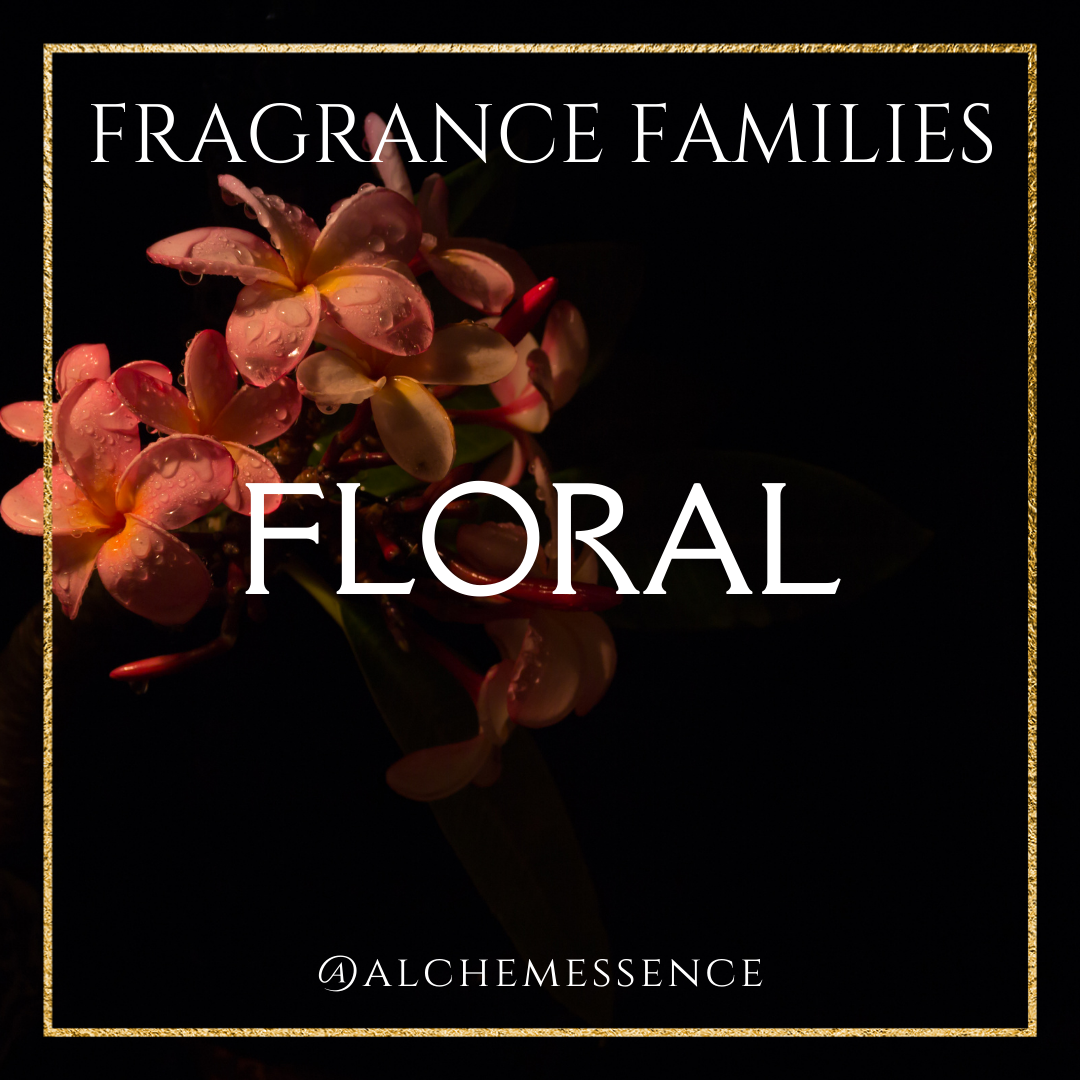A Guide to Natural Perfume Fragrance Families
Chypre…Fougère…Aromatic…the olfactory families of fragrance may sound somewhat exotic at first, but dive in and they become welcome allies on the path to perfume creation and selection.
Fragrance families are scent classifications used in perfumery, and each family has its signature ingredients and overall aroma. In this article, we’ll cover the main classifications of fragrances—though to be fair, there are several different versions of fragrance categories out there and no one seems to agree on a definitive version.
A Brief History of Fragrance Families
At the turn of the 20th century, when most perfumes were still made with pure botanical ingredients (though synthetics had been introduced with Guerlain’s Jicky), there were seven main families: single floral, floral bouquet, oriental, woody, chypre, fougère, and leather.
In general, these pure botanical perfumes contained resins, woods, flowers, spice, and citrus notes—we’ll go into more detail below.
Modern chemistry and access to new aromatics led to what we might think of as more green, fresh and aquatic notes in perfumes, primarily created through synthetic aldehydes. In the mid 1900s, new fragrance families emerged on the scene as a result:
Bright floral—combined the single and bouquet floral families
Citrus—citrus doesn’t last long on its own, so synthetics made this family have staying power
Green—like a bright, fresh chypre
Gourmand—edible notes of vanilla, cinnamon, and fruits
Ozone/Aquatic—this actually didn’t come around until the 90s…think clean and unisex
In 1983, popular perfume consultant Micheal Edwards decided to simplify the traditional and growing perfume families into a perfume wheel. The wheel has four main families and their sub-families around its circumference—woody, floral, oriental, and fresh.
In recent years, there’s been a movement to rename the traditional “oriental” family to “amber” or “ambrée”—as it’s become clear the former term is outdated and can be offensive. The updated Micheal Edwards perfume wheel reflects this:
Given the varied and changing history of fragrance families, it comes as no surprise that modern perfumery resources all use slightly different terms and organizations.
In general, several families appear regularly: fresh, floral, floriental, ambrée, fougère, woody, chypre, fruity, aromatic, citrus, green, aquatic, leather, and gourmand.
The Perfume Society has a fun interactive site that features eight of these families, each clickable to continue exploring subfamilies.
An important note on synthetic vs. natural fragrances:
Unless specified otherwise, most modern perfumes contain synthetic ingredients. Even “natural” perfumes commonly contain isolates, which are somewhat controversial in the world of natural perfumery.
For those switching to pure botanical perfumes, a few popular families will be off the table—perfumes considered aquatic/ozone, fresh, or green are almost always dominated by synthetic aldehydes, so these family classifications just aren’t useful in natural perfumery.
Botanical/Natural Perfume Classifications
Given the history of fragrance and the ingredients available, I use nine main families in my own perfume classifications. No guarantees these won’t continue to evolve, but for now, they wonderfully describe the main classifications of natural perfumes available:
Chypre Perfumes
One of my personal favorites, chypre (pronounced shee-pra) is named for Cyprus, the island of Aphrodite’s birth and home to the world’s oldest large-scale perfumery. The name in perfumery comes from François Coty’s 1917 perfume Chypre, which had notes of bergamot and citrus on top, a full floral middle with jasmine and rose, and an earthy base of oakmoss, patchouli, incense, musk, and styrax.
Chypre perfumes are characterized by a mossy accord of bergamot, oakmoss, patchouli, and labdanum. Some may be more floral, with strong notes of jasmine or ylang ylang, while others might be more citrusy, woody, or herbaceous. Both traditionally masculine and feminine fragrances have fallen in the chypre category.
Fougère Perfumes
A fougère is what is known as a fantasy scent, originating with Fougère Royale from Houbigant in 1882. Named for the French word for fern, these perfumes tend to have green and aromatic notes.
Lavender, geranium, vetiver, bergamot, oakmoss, and coumarin are commonly found in these perfumes, and while they were created for women, today masculine perfumes are dominated by the fougère family.
Floral Perfumes
The name speaks for itself with these perfumes—fragrant jasmine, carnation, rose, orange blossom, ylang ylang, magnolia, and more take the center in a floral perfume. While many beloved flowers simply aren’t available as naturals except through the laborious process of enfleurage (lily of the valley, helitrop, and lilac for example), many precious flowers are found naturally—they just cost a pretty penny ($1000 USD per ounce is not uncommon!). Lotus, narcissus, boronia, osmanthus, jonquille, cassie, broom, kewda, frangipani, champaca, and tuberose fall into this realm.
Within the many floral sub-families, two are worth mentioning here: soliflore, or single note perfumes that focus on celebrating and enhancing a single flower, and floral bouquets, which present well-balanced floral arrangements that make it difficult to single out any one flower among the many,
Today, floral fragrances are most popular among women, though in cultures throughout the world this isn’t necessarily the case—you’ll find kewda and rose among other florals throughout men’s fragrances in India and the Middle East!
Ambrée Perfumes
Also called amber—the post-oriental name is still settling in—these fragrances are characterized by rich, resins, vanilla, musk, and occasional spice. In perfumery, “amber” doesn’t refer to the stone but to ambergris, the precious and strangely fragrant bile of whales.
Today, ambrée perfumes tend to be rich, long-lasting, and have an exotic flavor about them. At least half of the botanical perfumes I’ve designed have been ambrée, as they smell divine and last forever, even as all-natural creations.
Sandalwood, coumarin, orris, vanilla, labdanum, and resins give ambrée perfume its signature notes, and the floral amber sub-family is one of the most rapidly growing fragrance families today. I’m not surprised, as the synergy of exotic florals, precious woods, and rich ambery notes truly nourishes the soul.
Aromatic Perfumes
The aromatic family is characterized by herbaceous notes—rosemary, basil, and tarragon are popular here. Though mainly found in men’s fragrances, I find aromatics work beautifully to create green and fresh notes in natural perfumes. Fresh florals like lavender and geranium, along with citruses, often overlay aromatic perfumes. Traditional colognes would found in this family.
Citrus Perfumes
While citrus notes are found in nearly all perfumes, pure citrus fragrances are light and bright. In mainstream citrus perfumes the tenacity will come from synthetics, but citrus scents in botanical and natural perfumes are perfectly possible. Some citrus perfumes will be lighter and a bit more fleeting, while sub-families like floral citrus, spicy citrus, and woody citrus will delight the wearer as citrus top notes give way to various lasting undertones.
A wide variety of citruses can be found in the citrus family. Bergamot and bitter orange are probably the most common, but yuzu, lime, mandarine, sweet orange, lemon, grapefruit, citron, and cedrat can all be found. I have blood orange, tangerine, mandarine, and kumquat in my collection, and use other lemony plants for citrus notes, such as lemongrass, lemon myrtle, and lemon verbena.
As a note, you may find the citrus family also referred to as the “hesperides” family. Legend has it that the Hesperis were three Greek nymphs who watched over “golden apples”—citrus fruits–giving immortality to any who tasted them.
Woody Perfumes
As with florals, the woody family name speaks for itself. Precious woods such as oud and sandalwood, dry notes like cedar and juniper, and woody herbs like patchouli and vetiver can be found in just about all woody perfumes. Some are warm and spicy with sweet resins, while others can be more aromatic, citrusy, and crisp.
My personal favorite woody perfume is Daikoku—with notes of buddhawood, sandalwood, and Japanese cedar and cypress, it smells like Japanese mountain temples laced with fragrant incense.
Leather Perfumes
Leather became a fragrance family thanks to the many aromas tanners would use to disguise the off-putting scents created during their processes (think ammonia, yuck). The smoke, resins, and woods used to mask the leather tanning process ended up mixing with the leather itself, creating a much-desired fragrance that spread to the world of perfumery.
Over time, this family has evolved to include many traditionally masculine notes—tobacco, cognac, smoke, woods, tar, and resins are common, with the leather notes being either forefront or nearly undetectable. In natural perfumery, which uses animal products, the leather notes might not be cruelty free. In botanical perfumery, however, there are many great alternatives—styrax, birch tar, and choya nakh are a few options.
Gourmand Perfumes
Relatively new on the perfume scene are the gourmands—those perfumes with a somewhat edible flavor profile, typically warm and spicy. The vast majority of gourmand perfumes contain synthetic ingredients and dessert-like scents—caramel, cotton candy, toffee, and bubblegum to name a few.
However the world of botanical perfumery has plenty to offer here if you’re willing to splurge on the pure, natural versions—chocolate, coffee, cognac, almond, vanilla, and even spices and amber notes can create lovely gourmand perfumes.
Within all the perfume families above, subfamilies are used to further delineate each perfume’s aroma. Here are a few of the terms you’ll see attached to each family:
Spicy—coriander, cinnamon, clove, pepper and more
Fruity—may contain citrus, berry, or other sweet notes
Soft—typically contains a powdery, musky element
Musky—similar to soft but heavier on the musk
Green—fresh herbs, bright florals
Fresh—similar to green, may also have more citrus
Aquatic—typically synthetic aldehydes, in natural perfumery can signify more animalic, seaweed-based notes
What do you think? Which aromas are your favorites? Let me know in the comments!
You might also like:












